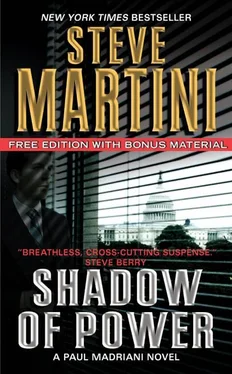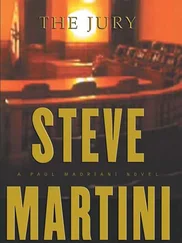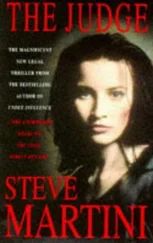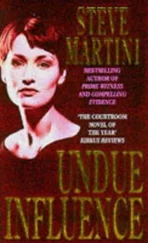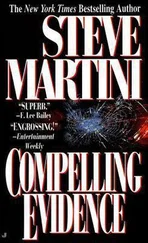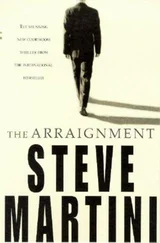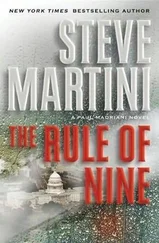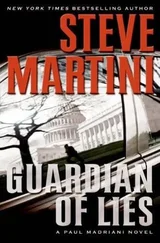“With everything that had happened, with Arthur dead, I’d forgotten entirely about the letter. Margaret never knew about it, nor did Aranda. I hadn’t thought about Terry in months. Suddenly I realized that Terry knew the letter was a hoax and that he was getting ready to go public. What seemed so easy in the islands six weeks earlier was now a nightmare, and there was no one I could share it with.”
The reason she now unburdens herself becomes clear. Trisha Scott has been trapped in a psychic isolation cell of horrors for almost a year, without a soul to share her tortured thoughts with.
“I couldn’t go to Terry and tell him that Arthur was dead. He wouldn’t care. Terry would simply have a second scandal to take to the bank. If I did nothing and he went public with the letter and what he knew about it, every reporter in the Western Hemisphere would be looking for Arthur. He’d be at the top of every headline in the States. And then I thought if I tried to put a date on the death certificate and Arthur turned up dead just as Terry was breaking the story on the letter, you’d have to hunt with dogs to find anybody in the country who didn’t believe that Arthur Ginnis had gotten caught in a scandal and committed suicide.
“What made it worse were Margaret and Aranda. They were innocents,” she says. “They followed my lead. They knew nothing about Scarborough or the letter or how Terry had died. All they were doing was buying time, doing what they thought Arthur would want them to do. If we couldn’t use Arthur’s death certificate to bail out, they would be caught in the middle of investigations and risk possible jail time for their part in concealing Arthur’s death. I had to stop Terry. I had no choice. What would you have done?” she says. “Tell me.”
“So what you’re saying is that Arthur Ginnis had to stay alive and Terry Scarborough had to die.”
There is a long pause as she stares at me across the table. Her eyes seem like empty spheres, and she looks dazed, as if she’s just caught a glimmer of the lights outside.
“I don’t know how else to say it, how to make such an utterly insane act sound rational,” she says, “but for me there really was no other way out.”
I finish my drink, and I get up from the table. I don’t say good-bye. I don’t say a word. I just walk toward the door. Outside, the light bars are flashing on three D.C. Metropolitan Police cars. Two uniformed cops and a plainclothes detective are walking this way. Trisha Scott will have a long night of questions ahead of her, and a great many days to think about what she has done.
In 1772 a black slave named James Somersett escaped from his owner in London. The owner wanted to send Somersett to Jamaica to work on a sugar plantation, what was in effect a death sentence. These events forced a decision by Lord Mansfield recorded in Somersett’s Case, in which it was determined that “slavery” did not exist and was not recognized under English common law. Mansfield came to this conclusion despite the fact that British ships had been hauling slaves for nearly two hundred years and many of its colonies in the British Empire could not survive without them. James Somersett was set free. This and a later decision in Scotland effectively abolished slavery in the British Isles. Though the institution of slavery continued to survive in the British colonies, including North America and the West Indies, the slaving interests of Britain were on notice by 1772 that an end to this “peculiar institution” was coming.
This is the historic backdrop for the “Jefferson Letter” and the deal that it portends, which is at the heart of the action in Shadow of Power.
When the Declaration of Independence was signed in 1776, there were more than half a million African slaves in the original thirteen British colonies of North America, constituting approximately 20 percent of the total population. In the southern colonies, African slaves made up 40 percent of the total population. At the time of the Declaration of Independence, its author, Thomas Jefferson of Virginia, owned more than a hundred slaves, a number that rose to more than two hundred during the course of his life.
Benjamin Franklin also owned African slaves, though not on the same order as Jefferson. It is known that Franklin owned at least two slaves, “King” and “George,” and held them in bondage for personal services and to work at his newspaper, the Pennsylvania Gazette. According to all known accounts, John Adams did not own slaves at any point in his life, even during his early presidency in Washington, when slave ownership among chief executives was common.
Jefferson made numerous statements, both verbal and in writing, evidencing his opposition to and abhorrence of the institution of slavery, and more than once he vowed to free his slaves. However, during the period between the adoption of the Declaration of Independence on July 4, 1776, and his death precisely fifty years later to the day, on July 4, 1826, other than a few individual cases of emancipation-two during his lifetime and five in his will-Jefferson continued to own, sell, and purchase slaves for his own personal use. There is evidence that he took pains to instruct his property managers and overseers to exercise care that his name not be associated with these transactions when they were recorded in the local press. He died bankrupt, never freeing his slaves.
The Articles of Confederation, the first organic law of the new nation following the American Revolution, were silent on the question of slavery, leaving to the individual states the option of whether to allow slavery, as well as the power to regulate and enforce it. However, with no ability to collect taxes or to enforce national laws the confederation was a failure. Within six years of its adoption, it was clear that something more was needed if the new nation was to survive.
In May 1787 delegates from twelve of the original thirteen states convened in Philadelphia; Rhode Island absented itself. The initial goal was to revise the Articles of Confederation, but this goal was rapidly abandoned. Meeting in secret sessions, the group was determined to write a new constitution. Delegates quickly coalesced around the concept of three branches for the new government-executive, legislative, and judicial-but just as quickly divided over the issue of how to apportion representation within the legislative branch. This resulted in the “Great Compromise,” by which large states would be assured of representation based on population in the House of Representatives and small states were assured of equal representation in the Senate, where each state would have two senators regardless of population.
Bound up in all this was the question of African slavery. The principal issue was whether slaves were to be characterized as property or as persons. Northern states, which generally opposed the institution of slavery as much for its effect on economics as a cheap source of labor as for reasons of ethics, wanted the slaves to be characterized as persons. Southern states became ambivalent until they realized that if the slaves were described as persons, this could enhance southern representation in the House of Representatives. Almost all the southern states were large in terms of geography but small in population as compared to those in the North.
In the negotiations that swirled around the language of the original Constitution, the issue of a state’s populace was critical. Population would determine not only the number of representatives in Congress for each state but the number of electoral votes to be awarded to the various states in electing the president. Therefore, control over two of the three branches of government was directly determined by population, and the third branch, the judiciary, was indirectly controlled through presidential nomination.
Читать дальше
